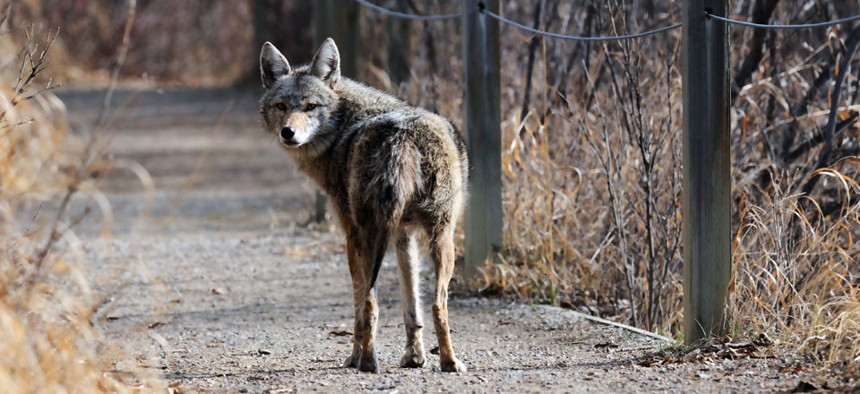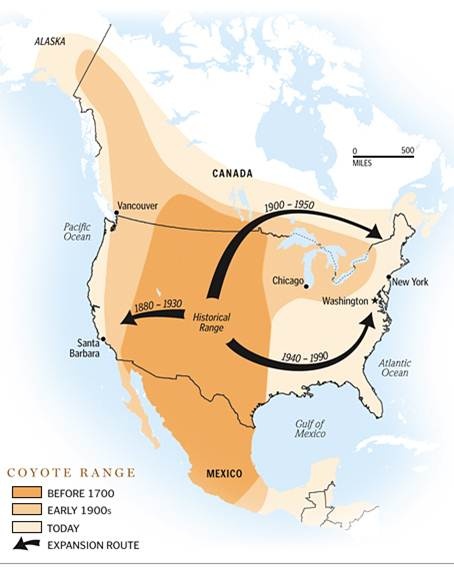Put Down the Traps and Guns—Coyotes Will Outsmart Them Every Time

Rob McKay/Shutterstock.com
A growing number of coyotes are pressuring cities to act aggressively, but hunting them can actually encourage larger populations.
Another week, another 'coyote derby' in California.
According to Project Coyote, a wildlife conservation non-profit, 11 coyotes were shot and killed in a "hunting contest" among Bakersfield, California, residents this past Sunday. Another competition is supposedly planned in the same area this weekend, where participating hunters will reportedly receive up to $300 for killing the most coyotes.
In California and beyond, coyote populations surely have soared in the last several decades . In farm-heavy Bakersfield, ranchers say coyotes threaten their livestock and livelihoods. Similar contests have occurred in parts of Oregon, New Mexico, Idaho, and elsewhere in California, including an infamous annual drive in Modoc County.
But the narrative of coyotes-threaten-domesticated-animals, humans-react-virulently isn't strictly rural. Native to the western U.S, the astonishingly adaptable coyote can now be found in virtually every habitat, across nearly all of North America, including major cities. Coyotes can and will adjust readily to most available food sources, occasionally including pets. That's raised understandable anxiety and fear among urban dwellers nationwide.

Coyote range expansion, pre-1700 to today. (Cook County Illinois Urban Coyote Research)
Most metros don't maintain active coyote control programs, opting instead for pet-attack prevention education. But increasing numbers are pressuring cities to act more aggressively. Austin, Texas, is currently debating legislation that would allow trapping and possibly killing coyotes—but only after one hurts a person or pet. And Seal Beach, California, caught media fire when it passed an ordinance last month to trap and euthanize local coyotes using carbon dioxide gassing.
Animal rights activists are calling Seal Beach's decision inhumane , while grieving pet owners call it a solution to "living in fear" of attacks . “The problem is the coyotes are habituated,” Mayor Ellery Deaton told NBC Los Angeles . “They’re wild dogs, they’ve been trained and they’ve been trained to come in and look for food and water.”
But research has shown that hunting coyotes as a means of population control can have counterproductive effects: Under pressure, coyotes can actually produce larger litters with higher survival rates, a behavior known as compensatory reproduction . It's another hallmark of their incredible adaptability.
Plus, predators are as much a part of ecosystems as any other plant or animal.“You simply cannot remove coyotes... without then being overrun by rats and rabbits and all that,” Tim Revell, a professor of biology at Mt. St. Antonio College, told KNBC . “You create an evolutionary pressure on those that are left, that are smarter than that. They’ll survive, reproduce and it becomes more and more of a problem.”
A better approach for urbanites? Coyote "hazing," or keeping the naturally human-fearing animals afraid of humans. If you and the pooch encounter a coyote on your morning walk, stand your ground. Get big. Make noise. Cover trash in your yard, and keep pets and food indoors at night.
Cities can also track and study the animals, which can help officials target cases of conflict. Cook County, Illinois , has a particularly robust research program that does precisely this.
“Have them tagged and radio collared,” Revell told KNBC. “And then that way we would know which ones are the specific problems.”
And for those in rural areas concerned about livestock, here's a new trend: Keeping " guardian dogs " has been actually shown to reduce overall coyote predation. It's a dog-scare-dog world, after all.
( Image via Rob McKay / Shutterstock.com )
NEXT STORY: Major Tech Company Severs Ties With ALEC





